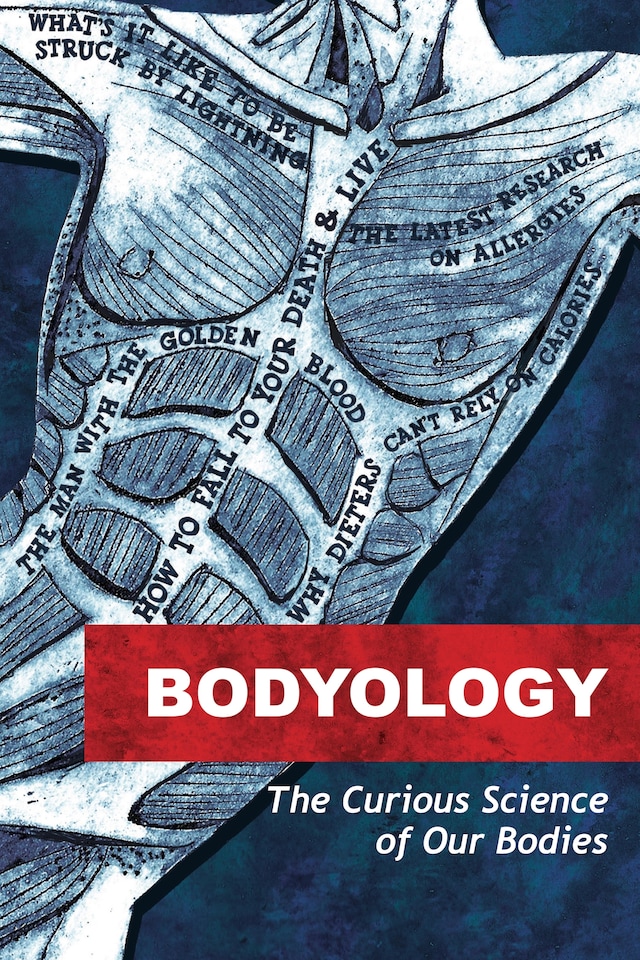
Bodyology
The Curious Science of Our Bodies
Tietoa kirjasta
Ever wondered what it's like to be hit by lightning or to lose your sense of smell? Heard about the woman saved by bee stings — or the window cleaner who survived a 400ft fall?
Originally written for the Wellcome charity, 16 stories by leading science writers explore the mysteries of the human body. Learn about everything from diets to allergies, hair colour to rare blood, and from allergies to remote surgery.
Contents
- What's it like to be struck by lightning? - Charlotte Huff
- Why do we colour hair? - Rebecca Guenard
- The man with the golden blood - Penny Bailey
- Why dieters can't rely on calories - Cynthia Graber
- 3D printers can now make body parts - Ian Birrell
- How to fall from a skyscraper and live to tell the tale - Neil Steinberg
- The quest to explain miscarriages - Holly Cave
- Can the power of thought outwit ageing? - Jo Marchant
- Seeking a 'cure' for male baldness - Rhodri Marsden
- How bee stings saved a woman's life - Christie Wilcox
- The global trend for 'kangaroo' babies - Lena Corner
- What it means to lose your sense of smell - Emma Young
- The doctor aiming to end eye pain - Bryn Nelson
- Could allergies be a defence against noxious chemicals? - Carl Zimmer
- Why pharma may be going slow on the male pill - Andy Extance
- How virtual reality headsets aid remote surgery - Jo Marchant
- Shhh! What exactly is the menopause? - Rose George
Extract
What it's like to be struck by lightning?
Sometimes they'll keep the clothing, the strips of shirt or trousers that weren't cut away and discarded by the doctors and nurses. They'll tell and retell their story at family gatherings and online, sharing pictures and news reports of survivals like their own or far bigger tragedies. The video of a tourist hit on a Brazilian beach or the Texan struck dead while out running. The 65 people killed during four stormy days in Bangladesh.
Only by piecing together the bystander reports, the singed clothing and the burnt skin can survivors start to construct their own picture of the possible trajectory of the electrical current, one that can approach 200 million volts and travel at one-third of the speed of light.
In this way, Jaime Santana's family have stitched together some of what happened that Saturday afternoon in April 2016, through his injuries, burnt clothing and, most of all, his shredded broad-brimmed straw hat. "It looks like somebody threw a cannonball through it," says Sydney Vail, a trauma surgeon in Phoenix, Arizona, who helped care for Jaime after he arrived by ambulance, his heart having been shocked several times along the way as paramedics struggled to stabilise its rhythm.
Jaime had been horse-riding with his brother-in-law and two others in the mountains behind his brother-in-law's home outside Phoenix, a frequent weekend pastime. Dark clouds had formed, heading in their direction, so the group had started back.
They had nearly reached the house when it happened, says Alejandro Torres, Jaime's brother-in-law. He paces out the area involved, the landscape dotted with small creosote bushes just behind his acre of property. In the distance, the desert mountains rise, rippled chocolate-brown peaks against the horizon.
The riders had witnessed quite a bit of lightning as they neared Alejandro's house, enough that they had commented on the dramatic zigzags across the sky. But scarcely a drop of rain had fallen as they approached the horse corrals, just several hundred feet from the back of the property.
Alejandro doesn't think he was knocked out for long. When he regained consciousness, he was lying face down on the ground, sore all over. His horse was gone.
The two other riders appeared shaken but unharmed. Alejandro went looking for Jaime, who he found on the other side of his fallen horse. Alejandro brushed against the horse's legs as he walked passed. They felt hard, like metal, he says, punctuating his English with some Spanish.
 252 Sivua
252 Sivua